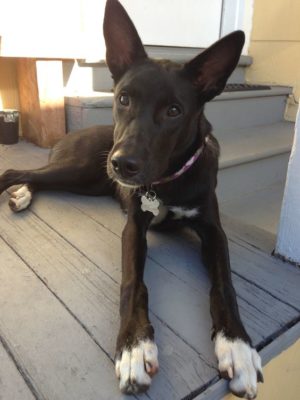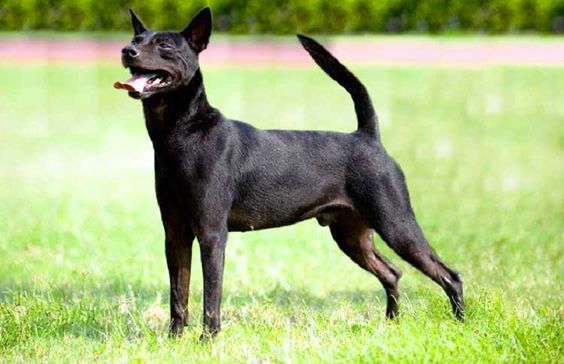Taiwan Dog
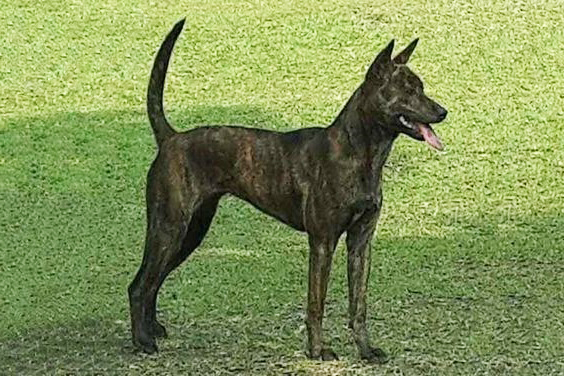
Because of its fearlessness and willful character, the Taiwan Dog is increasingly used as a guard dog in its homeland. Most cynologists say the Formosus has a quick reaction to external factors and recommends it for police assistance. The Taiwan Dog is wary and unkind to all strangers. It once again proves their disposition to watchdog service.
Table of Contents
Breed Information
| Another Name | Formosan Mountain Dog |
| Origin | Taiwan |
| Height | Males 48-53 cm Females 43-48 cm |
| Weight | 12-18 kg |
| Fur | Short |
| Color | Black, tiger, red, white, bicolor |
| Lifespan | 10-13 years |
| FCI Classification | Spitz and primitive types |
| Group | Dogs for protection, hunting dogs |
| Price | The breed is considered exotic, and the price for a puppy is usually negotiable; it is impossible to name the average cost |
Breed Photos
Origin History
The ancestors of the Taiwan Dog are believed to be ancient hunting dogs that lived in Southeast Asia about 20,000 years ago. Dogs were brought to the island by Austronesian tribes, who settled in Taiwan and were engaged in hunting and fishing. The breed at that time developed independently; no humans interfered with this process. Taiwan Dogs have become almost wild but have not lost the ability to train. The breed has a sufficient number of names, all of them somehow related to the place of origin. Most often, in their homeland, dogs are called in abbreviated formosis. It is due to the historical colonial name of the island of Taiwan – Formosan.
The whole period of the breed’s formation was very difficult. From the 1890s to the 1940s, the breed was close to extinction. Several factors led to this: colonizers began to crossbreed local animals with hunting dogs, and purebreds could be counted on the fingers at that time. In the early 20th century, during Taiwan’s occupation by the Japanese military, essentially the same thing happened. And during World War II, Formosians were actively crossed with German shepherds to achieve the ideal dog for guarding their posts. Thus the true representatives of the Taiwan Dog disappeared. To restore the breed’s population, we are grateful to the biologists at Taiwan University, who have done a formidable job. For many years, they studied the walls’ excavations and drawings to understand what a purebred Formosus should look like. Then they were able to find about 40 individuals who were recognized by genetic research methods as representatives of the Taiwan Dog. The official standard of the breed was recognized by the International Canine Federation already in 2004, and then only on a preliminary basis. Permanent recognition of the breed was received in 2015. In the USA, Great Britain, and other countries that are not FCI members, the Taiwan Dog is not recognized.
Appearance
The Taiwan Dog is a small, square-shaped dog. Harmoniously built, the constitution is dry. The head from the front appears triangular, wide skull. The muzzle is long, tapering toward the nose but not pointed. Wrinkles are absent. A peculiarity of Formosus is considered black or spotted tongue. The eyes are almond-shaped (color: dark brown, yellow, or pale eyes are not allowed). The ears are thin and sharp, in appearance often compared to the ears of a bat. The body is quite muscular. A strong and straight back. The abdomen is taut. The tail set high, saber-shaped. The hair is short, 1,5-3 cm long. The hair is firm to the touch and fits closely to the skin. Two-tone colors are acceptable: combinations of white with black, red, or tiger.
Character
Because of its fearlessness and willful character, the Taiwan Dog is increasingly used as a guard dog in its homeland. Most cynologists say the Formosus has a quick reaction to external factors and recommends it for police assistance. The Taiwan Dog is wary and unkind to all strangers. It once again proves their disposition to watchdog service. Often the dog is compared to an ordinary mongrel dog precisely because, for a long time, Formosans were not domesticated by humans and led wildlife. They have no fear of unknown terrain, dense forests, and mountain cliffs. The Taiwan Dog is loyal and obedient only to its master. A stranger will not let him near. To children is not aggressive, but indifferent. Very serious, all attempts to play will take an irritated look. Formosans are more suitable for life in their home in the open area. Will serve you as a courageous watchdog and a faithful assistant in the hunt.
Care
Seasonal shedding in Formosans is quite severe. Regular combing of the pet, at least once a week, is recommended. The Taiwan Dog very much dislikes water and all kinds of water procedures. Therefore, you should not torture the pet, bathe as dirty as possible. Watch the condition of the eyes and ears. Claws usually sharpen on their own due to the active lifestyle of the dog.
Training
The Taiwan Dog is an independent dog with an independent character. The propensity for training is low. Pressure on the pet can only make things worse between you. If you’re not sure you can handle Formosan’s stubbornness, enlist the help of an experienced dog handler. It is better to do it from an early age so that the dog does not become completely unmanageable.
Common Diseases
Because of their “wild” past, Formosas are resistant to severe diseases and have strong immunity. Some diseases are characteristic of the Taiwan Dog:
- musculoskeletal problems (patella dislocation);
- eye infections;
- demodicosis.
Nutrition
Taiwan Dogs are completely undemanding when it comes to food. Since ancient times, they are used to getting their food. In any case, a balanced diet is necessary for the good health and normal formation of the pet. Veterinarians recommend feeding the Taiwan Dog with specialized food, not with natural food.
 Weimaraner
Weimaraner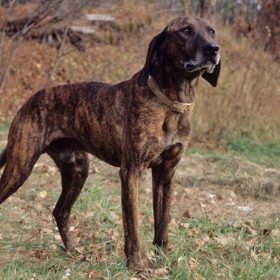 Plott Hound
Plott Hound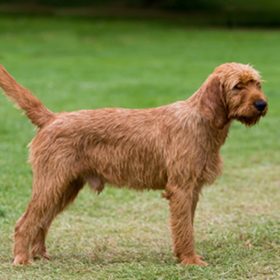 Griffon Fauve de Bretagne
Griffon Fauve de Bretagne Thai Ridgeback
Thai Ridgeback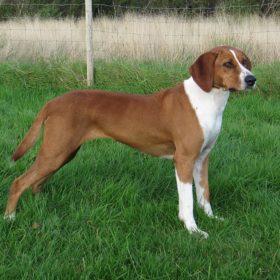 Hygen Hound
Hygen Hound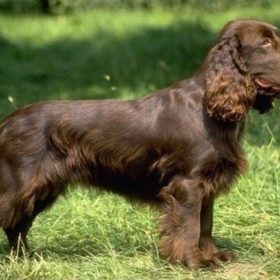 German Spaniel
German Spaniel
